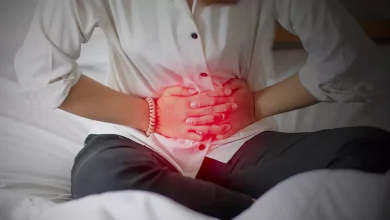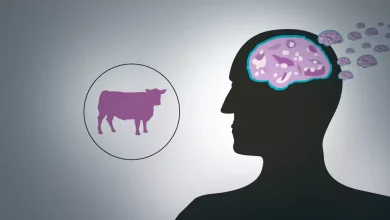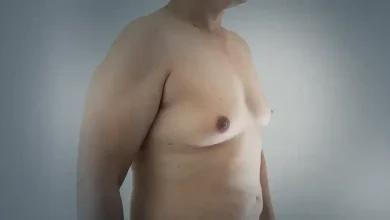All about Emphysema

What is Emphysema?
Emphysema is a lung disorder that occurs because of damage to the walls of the alveoli in your lungs which causes shortness of breath. Over a period of time, the inner walls of the air sacs become ruptured and weak which leads to larger air spaces in place of numerous small ones. This decreases the surface area of the lungs and, results in a decrease in the amount of oxygen that reaches your bloodstream. While breathing, the damaged alveoli don’t function properly and old air becomes trapped, leaving no room for fresh, oxygen-rich air to enter and it causes chronic bronchitis in many people.
What are the Types of Emphysema?
There are four types of emphysema:
Centrilobular Emphysema: Also known as centriacinar emphysema, it is the most common type of emphysema where the centre of a pulmonary lobule (centrilobular) in the lung, the area around the terminal bronchiole gets affected, and the first respiratory bronchiole gets affected that can be detected on imaging as an area near the tip of the apparent pulmonary artery. It is mostly linked with smoking and chronic bronchitis.
Ponlobular Emphysema: Also known as panacinar emphysema, here all of the alveoli in a lobule and can involve the whole lung or mainly the lower lobes are affected. Ponlobular emphysema is mostly linked with alpha-1 antitrypsin deficiency, and Ritalin lung, and has nothing to do with smoking.
Paraseptal Emphysema: Also known as distal acinar emphysema, it’s related to emphysematous that is located near the pleural surface, or to a fissure. The cystic spaces called blebs or bullae that manifest in paraseptal emphysema generally happen in just one layer underneath the pleura. This differentiates it from the honeycombing of small cystic spaces visible in fibrosis that commonly arises in layers. Paraseptal Emphusema is not connected with airflow blockage.
Paracicatricial Emphyesma: Paracicatricial emphysema, also called irregular emphysema, occurs next to areas of fibrosis (scarring) as big spaces. The scarring mostly happens because of silicosis, granulomatous infection, tuberculosis, or pulmonary infarction. It can be difficult to discriminate it from the honeycombing of pulmonary fibrosis.

What are the Symptoms of Emphysema?
The symptoms of emphysema include:
- Shortness of breath especially during even light physical activity
- Chronic cough also known as smoker’s cough
- Wheezing.
- Persistent feeling of not being able to get enough air.
- Stiffness in your chest.
- Heightened mucus production.
- Unusual mucus color such as yellow or green.
- Fatigue.
- Heart conditions
- Difficulty in sleeping
- Anxiety.
- Depression.
- Losing weight
What are the Causes of Emphysema?
The main cause of emphysema is long-term exposure to airborne irritants, such as:
- Tobacco smoke
- Marijuana smoke
- Air pollution
- Vaping, e-cigarettes, and cigar
- Chemical fumes and dust
In some rare cases, emphysema may be caused because of an inherited deficiency of a protein that shields the elastic structures in the lungs known as alpha-1-antitrypsin deficiency emphysema.

What are the Risk Factors of Emphysema?
The risk factors of emphysema may include:
Smoking: Smoking cigarettes is one of the main causes of developing emphysema along with smoking marijuana, cigar, and pipe. The number of years and amount of tobacco smoked plays an important role in developing this condition.
Age: Even though the lung damage that happens in emphysema develops slowly, the symptoms of tobacco-related start between the ages of 40 and 60.
Passive Smoking: Also known as second-hand smoke, increases your risk of emphysema.
Occupational exposure to fumes or dust: If your job involves working in a place where you are exposed to certain chemicals or dust from grain, cotton, wood, or mining products, your chances of developing emphysema increase.
Exposure to indoor and outdoor pollution: Breathing indoor pollutants, including fumes from heating fuel, along with outdoor pollutants such as car and factory exhaust, increases your risk of emphysema.
What are the Complications of Emphysema?
People with emphysema can include complications such as:
Collapsed lung (pneumothorax): A collapsed lung can be fatal among people with serious emphysema, as their lung condition is already compromised.
Heart problems: Emphysema can lead to heart-related diseases because it increases the pressure in the arteries that links the heart and lungs and can result in a condition known as cor pulmonale, where a part of the heart expands and weakens.
Large holes in the lungs (bullae): Some people with emphysema may get empty spaces in the lungs known as bullae which can be as large as half the lung. Along with decreasing the amount of space available for the lung to expand, giant bullae can augment your risk of pneumothorax.
How Emphysema is Diagnosed?
Emphysema can be diagnosed through various tests including:
Imaging tests: Imaging tests include chest X-ray that helps to detect advanced emphysema and rule out other reasons for shortness of breath.
Another type of imaging test includes computerized tomography (CT) scans which use X-ray images taken from various directions to see cross-sectional views of internal organs. CT scans are very useful to examine and diagnose emphysema.
Blood tests: Blood is taken from an artery in your wrist and sent to the lab to examine how well your lungs transfer oxygen into and get rid of carbon dioxide from, your bloodstream.
Lung function tests: These noninvasive tests help to measure how much air your lungs can hold and how far the air flows in and out of your lungs along with measuring how well your lungs send oxygen to your bloodstream.
What are the Treatment Options Available for Emphysema?
Electrocardiogram (EKG): Electrocardiogram (EKG) is done to check the function of your heart. Your doctor may prescribe an EKG to rule out heart disease as a cause of shortness of breath.
What are the treatment options available for Emphysema?
Both medications and therapies can be given to treat emphysema
Medications
Based on the severity of your symptoms, your doctor may prescribe:
Bronchodilators: These medicines are helpful to treat cough, shortness of breath, and breathing problems as they relax constricted airways.
Inhaled steroids: Corticosteroid drugs inhaled as aerosol sprays decrease inflammation and might help to treat shortness of breath.
Antibiotics: Antibiotics are given if you have a bacterial infection, such as acute bronchitis or pneumonia.
Therapy
Pulmonary rehabilitation: A pulmonary rehabilitation program is helpful to teach you breathing exercises and techniques that can be helpful to decrease your breathlessness and improve your ability to exercise.
Nutrition therapy: Here you will be advised about what nutrients you should take because, in the early stages of emphysema, many people may be required to lose weight, while people with late-stage emphysema often require gaining weight.
Supplemental oxygen: If you have severe emphysema with low blood oxygen levels, using oxygen regularly at home and when you exercise may give some relief. It’s usually provided through narrow tubing that fits into your nostrils.
Living with Emphysema
People with emphysema may find it difficult to lead a normal life because they may get tired easily, may have chest pains or palpitations, or experience headaches, sleep problems, and irritability. Their quality of life depends on how early treatment is started and the severity of the condition. If taken proper treatment is in the early stages then one can lead a normal life.
Whom to Consult?
If you notice unexplained shortness of breath for several months, especially if it’s getting worse or it’s interfering with your daily activities, immediately visit your doctor. Don’t ignore it by telling yourself it’s because you’re aging or out of shape. Seek immediate medical attention if you experience symptoms such as shortness of breath, not being able to climb stairs, your lips or fingernails turning blue or gray with exertion, finding it difficult to stay alert, etc.




